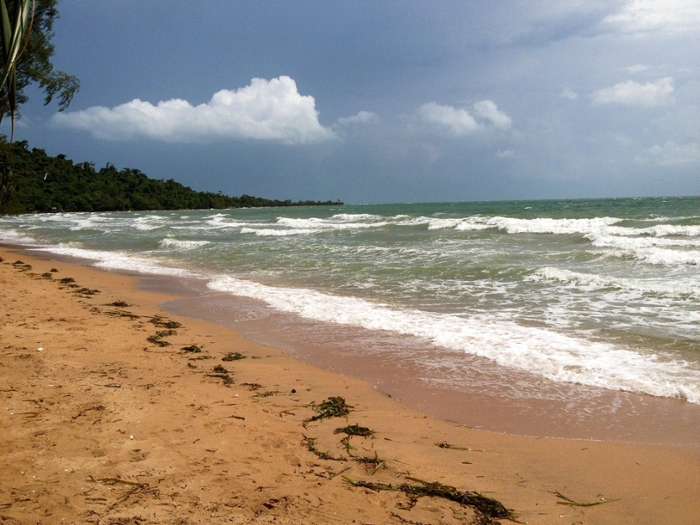Lower Sesan Dam (LS2): Cambodia's struggle for responsible and sustainable development
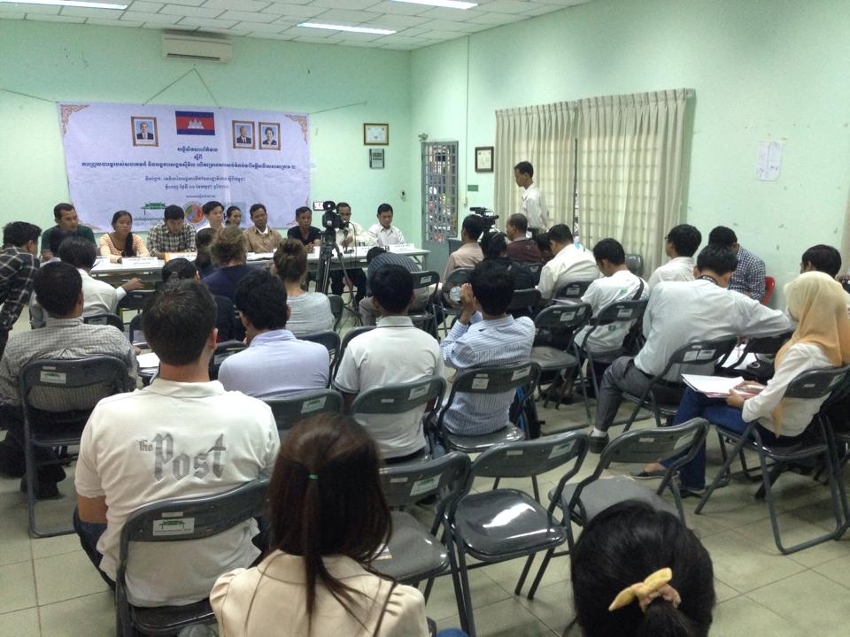
This past Tuesday, I attended a press conference hosted by the NGO Forum on Cambodia, which addressed the development of a hydropower dam in Stung Treng province. In attendance were leaders of the indigenous communities affected by the project, representatives from civil society organizations, and international and local press. Thankfully, it was much easier to attend this conference as opposed to what happened last week. One of ODC’s focus areas for research is hydropower in Cambodia, so I thought this would be a great opportunity to learn more about the industry and its various environmental and social impacts.
Because Cambodia generates more than 90% of its energy by burning expensive and imported diesel fuel, the government is searching for cheaper ways to generate energy. In addition to coal and natural gas exploration, there is a concerted effort to develop the country’s hydropower sector. Experts have estimated that the industry has the potential to generate 10,000 megawatts of energy. Projects are slowly, but steadily, emerging in the northern and northeastern provinces and there are presently five projects under development.
One of these projects, under joint coordination between Chinese and Cambodian companies, is located on the Sesan River–named the Lower Sesan Dam (LS2). Construction of LS2 is already underway and it is expected to be completed by 2017. LS2 is the first hydropower project to tap the Sesan River and it will eventually create a 33,560 hectare reservoir that has a generating capacity of more than 400 megawatts.
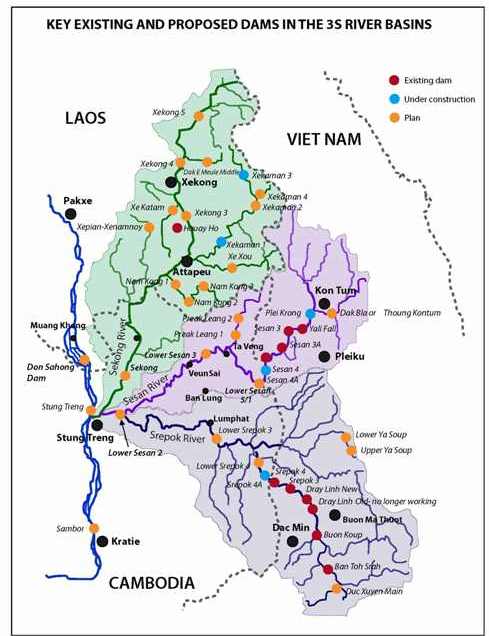
The LS2 has garnered much criticism from civil society organizations and indigenous communities. Land grabbing practices, illegal logging, unlawful fishing activities, use of child labor, and deteriorating water quality downstream have all been linked to LS2 since its construction began. The press conference allowed the various groups affected by LS2 to come together and share their concerns to the public.
At one point during the conference, one of the village representatives succumbed to tears and as she revealed that her entire community–which has lived on the banks of the Sesan River for generations–would be soon be displaced if construction continued to progress. According to some sources, more than 5,000 people will be forcibly resettled upon completion of the dam. Villagers would also lose access to the vast majority of their fishery resources due to the blocking of nearby rivers; in fact, 78,000 people living above LS2 are expected to lose access to migratory fish. I’ve learned a great deal about Cambodia’s hydropower industry from my research at the office, but to hear from the actual people affected by projects like LS2 was an eye-opening experience that reminded me of Cambodia’s constant struggle for responsible and sustainable development.
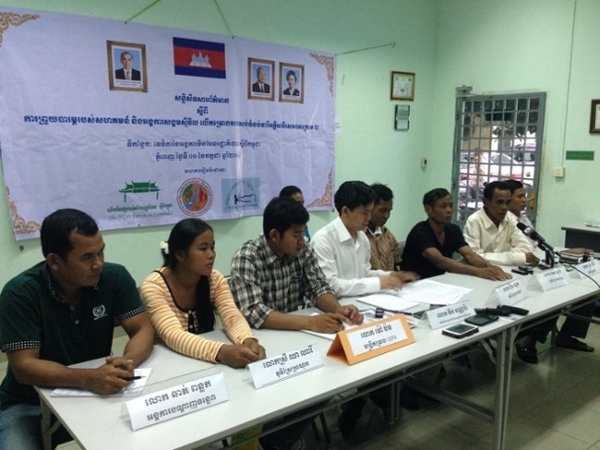
This past weekend, my co-interns and I went to Kampot province in the southwest. After a three-hour bus ride, we arrived and were strangely greeted by a statute of the largest durian I have ever seen. The city, as we soon learned, is famous (or infamous) for this particular fruit. Usually adventuresome when it comes to food, I have no regrets not trying the fruit this time around!

While in Kampot, we also visited the Phnom Chhngok caves. Crawling through small crevices, climbing and swinging on tree branches, and avoiding unexpected bats were all a part of the experience which reminded me of something I’d seen in an Indiana Jones movie. The underground caves are definitely a must-see whenever visiting Kampot.
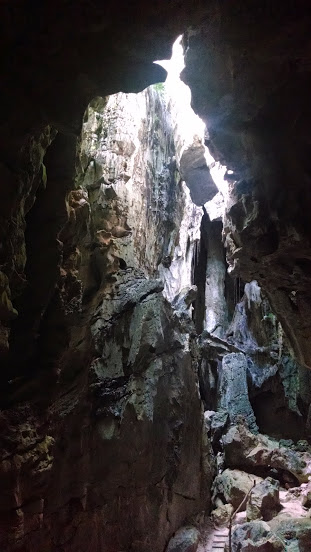
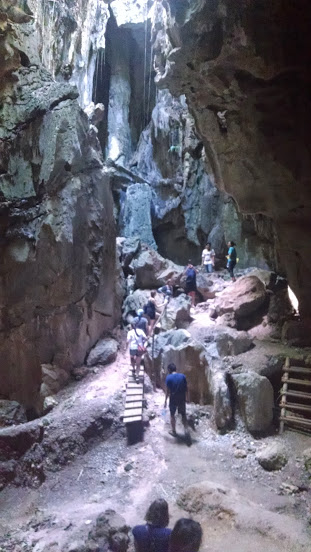
Later in the day, we ventured onto Koh Thonsáy, or Rabbit Island. We heard the island boasted one of the best beaches in the country, but the only way to get there was by boat and a hike through a forest. While I thought the boat ride would be relatively smooth, I was quickly mistaken. Rain and large waves crashed upon the boat as we made our way through the sea and we were drenched to the bone when we eventually arrived on the island.
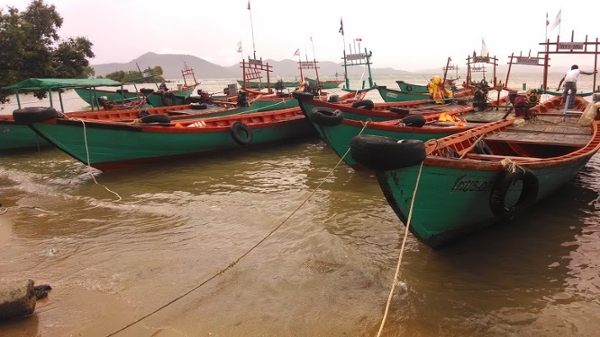
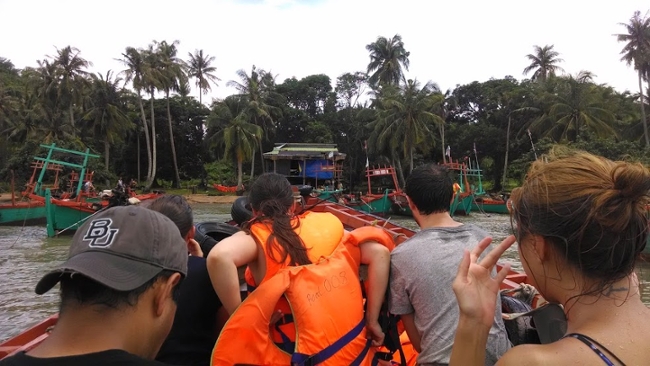
Despite the wet and slightly terrifying journey to get to the beach, I realized it was worth the ordeal and discovered one of the best beaches I had ever visited!
